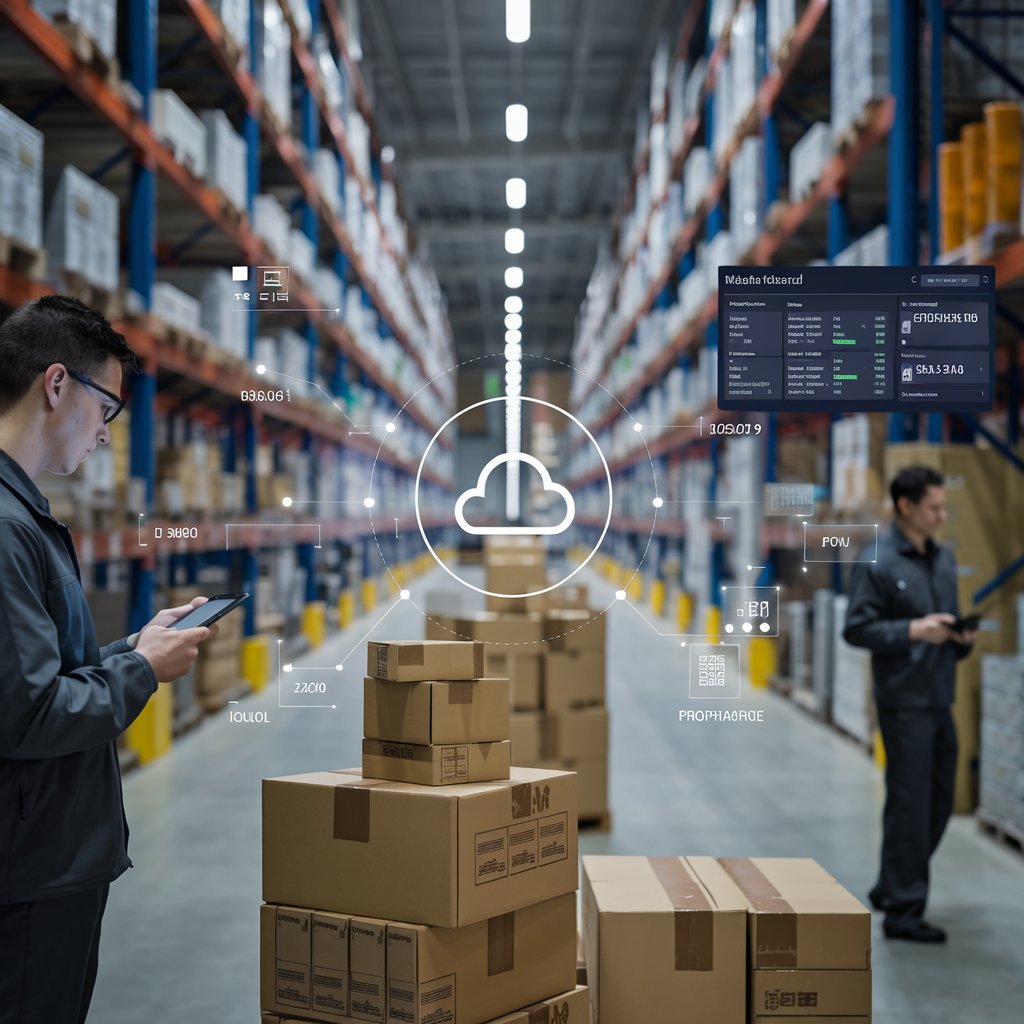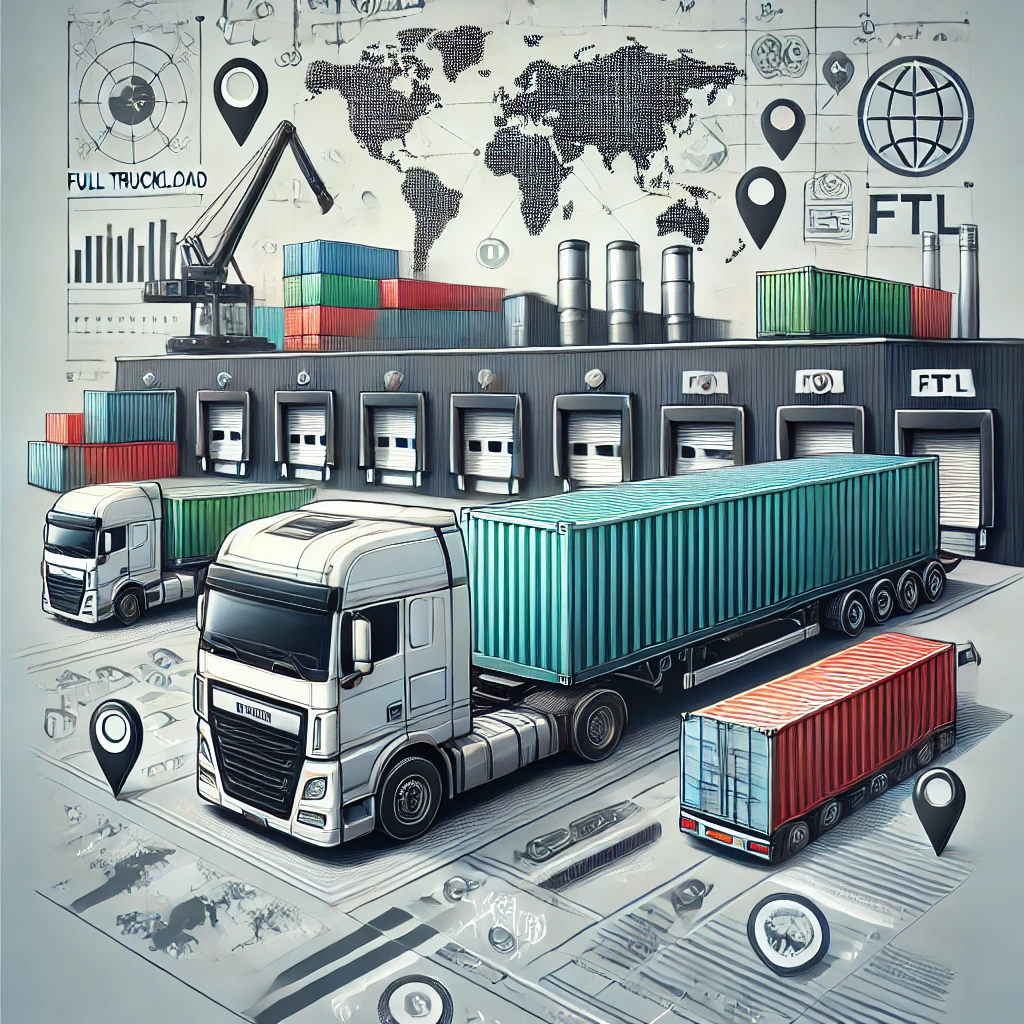Truckload Shipping: Navigating the FTL Business and Market

Key Takeaways:
- Truckload shipping dedicates an entire truck to one shipment
- The FTL market is dynamic, with various players and evolving technologies
- Pricing in truckload shipping is influenced by multiple factors
- Technology is reshaping the truckload industry
- Choosing the right FTL carrier is crucial for business success
Overview of the FTL Trucking Market
The truckload shipping market is a crucial component of the global logistics industry. Here’s an overview of its current state:
- Growth Drivers: E-commerce expansion, globalization of supply chains, and technological advancements are key growth factors.
- Regional Dominance: North America leads the market, followed by Europe and Asia-Pacific.
- Market Segmentation: The market is segmented by type (dry van, refrigerated, flatbed, etc.) and end-user industry (retail, manufacturing, automotive, etc.).
- Competitive Landscape: A mix of large national carriers, regional players, and owner-operators characterizes the market.
Understanding these market dynamics is crucial for businesses operating in or relying on the truckload shipping industry.
Key Players in the FTL Industry: Major Companies and Their Specialties
The truckload shipping market features a diverse range of players:
- J.B. Hunt Transport Services: Known for its intermodal operations and technology integration.
- Schneider National: Specializes in truckload, intermodal, FTL Business and Market and logistics services.
- Knight-Swift Transportation: One of the largest truckload carriers in North America.
- Werner Enterprises: Offers diversified truckload transportation services.
- XPO Logistics: Known for its tech-driven approach to truckload and other logistics services.
- Landstar System: Operates through a network of independent agents and owner-operators.
- Old Dominion Freight Line: Specializes in less-than-truckload shipping but also offers truckload services.
Each of these companies brings unique strengths to the truckload market, from technological innovation to specialized services.

How to Choose the Right FTL Carrier for Your Business Needs
Selecting the appropriate truckload carrier is crucial FTL Business and Market for efficient shipping. Consider these factors:
- Service Coverage: Ensure the carrier operates in your required geographical areas.
- Capacity: Verify that the carrier can handle your shipment volumes, especially during peak seasons.
- Specialization: Choose carriers with experience in handling your specific type of cargo.
- Technology Integration: Look for carriers offering real-time tracking and digital documentation.
- Safety Record: Check the carrier’s safety ratings and accident history.
- Reliability: Assess on-time delivery rates and customer reviews.
- Financial Stability: Ensure the carrier is financially sound to avoid service disruptions.
By carefully evaluating these aspects, you can select a truckload carrier that best fits your business needs.
FTL Freight Rates: Factors Affecting Pricing and How to Negotiate
Truckload shipping rates are influenced FTL Business and Market by various factors:
- Distance: Longer hauls generally cost more.
- Fuel Prices: Fluctuations in fuel costs directly impact shipping rates.
- Supply and Demand: Market conditions can cause rates to fluctuate.
- Cargo Type: Special handling requirements can increase costs.
- Seasonality: Rates may be higher during peak shipping seasons.
- Accessorial Charges: Additional services like liftgate or inside delivery incur extra fees.
- Transit Time: Expedited services come at a premium.
When negotiating rates:
- Understand market rates and your shipping patterns
- Consider long-term contracts for consistent volume
- Be flexible with pickup and delivery times when possible
- Consolidate shipments to maximize truck utilization
- Build strong relationships with carriers for better rates
Effective negotiation can lead to significant cost savings in truckload shipping.
The Role of Freight Brokers and 3PLs in FTL Shipping
Freight brokers and Third-Party Logistics providers (3PLs) play a crucial role in the truckload market:
- Freight Brokers:
- Act as intermediaries between FTL Business and Market shippers and carriers
- Leverage their carrier networks to find available capacity
- Often provide competitive rates due to their volume discounts
- Handle paperwork and communication between parties
- 3PLs (Third-Party Logistics Providers):
- Offer a broader range of services beyond brokerage
- Provide end-to-end supply chain solutions
- Often have their own assets (trucks, warehouses) in addition to brokerage services
- Offer technology solutions for shipment tracking and management
Both freight brokers and 3PLs can be valuable partners in managing truckload shipping, especially for businesses without dedicated logistics departments.
Technology Platforms Revolutionizing the FTL Industry
Digital innovation is transforming truckload shipping:
- Digital Freight Matching Platforms: Connect shippers directly with carriers, often in real-time.
- Transportation Management Systems (TMS): Provide end-to-end visibility and management of shipping operations.
- Blockchain in Logistics: Enhances transparency and security in transactions and documentation.
- IoT and Telematics: Enable real-time tracking and monitoring of shipments and vehicle performance.
- AI and Machine Learning: Optimize routing, predict delays, and automate decision-making processes.
- Mobile Apps: Facilitate communication between drivers, dispatchers, and customers.
- Cloud-Based Solutions: Allow for scalable and accessible data management across the supply chain.
These technologies are making truckload shipping more efficient, transparent, and cost-effective.

Challenges Faced by FTL Companies and How They Overcome Them
Truckload shipping companies face several challenges:
- Driver Shortage:
- Challenge: An aging workforce and difficulty attracting new drivers.
- Solution: Improved working conditions, competitive pay, and advanced FTL Business and Market training programs.
- Fuel Price Volatility:
- Challenge: Unpredictable fuel costs affecting profitability.
- Solution: Fuel surcharges, investment in fuel-efficient vehicles, and route optimization.
- Regulatory Compliance:
- Challenge: Keeping up with changing regulations like Hours of Service rules.
- Solution: Implementing compliance management systems and regular driver training.
- Technology Adoption:
- Challenge: Integrating new technologies into existing operations.
- Solution: Phased implementation approaches and comprehensive staff training.
- Capacity Fluctuations:
- Challenge: Balancing capacity with demand in a cyclical market.
- Solution: Developing flexible fleet strategies and leveraging data analytics for forecasting.
- Last-Mile Delivery:
- Challenge: Efficiently handling the final leg of delivery in urban areas.
- Solution: Partnering with local delivery FTL Business and Market services or implementing innovative delivery methods.
- Sustainability Pressures:
- Challenge: Meeting increasing demands for eco-friendly operations.
- Solution: Investing in alternative fuel vehicles and implementing green logistics practices.
Addressing these challenges is crucial for the long-term success of truckload shipping companies.
Strategies for Growing an FTL Trucking Business
For companies looking to expand their truckload operations, consider these growth strategies:
- Diversification of Services: Offer specialized services like refrigerated or hazmat transport.
- Geographic Expansion: Enter new markets or regions to broaden your customer base.
- Technology Investment: Implement cutting-edge logistics technology to improve efficiency.
- Strategic Partnerships: Collaborate with complementary businesses or join carrier networks.
- Customer-Centric Approach: Focus on building long-term relationships with key clients.
- Mergers and Acquisitions: Grow through strategic acquisitions of smaller carriers.
- Driver Retention Programs: Implement initiatives to attract and retain quality drivers.
Successful growth requires a balanced approach, considering market conditions and company strengths.

Customer Service in FTL Logistics: Best Practices and Importance
Excellent customer service is a key differentiator in the competitive truckload market:
- Proactive Communication: Keep customers informed about shipment status and any potential issues.
- Flexibility: Be willing to accommodate special requests or last-minute changes when possible.
- Problem Resolution: Have a clear process for addressing and resolving customer concerns quickly.
- Personalized Service: Assign dedicated account managers for key clients.
- Technology Integration: Offer user-friendly platforms for booking, tracking, and managing shipments.
- Continuous Improvement: Regularly solicit and act on customer feedback.
- Value-Added Services: Provide additional services like packaging or warehousing to enhance customer experience.
Prioritizing customer service can lead to increased customer loyalty and business growth in truckload shipping.
Partnerships and Collaborations in the FTL Sector
Strategic partnerships are becoming increasingly important in the truckload industry:
- Carrier-Shipper Partnerships: Long-term agreements for consistent volume and rates.
- Intermodal Partnerships: Collaborations between truck, rail, and ocean carriers for efficient long-distance transport.
- Technology Partnerships: Collaborations with tech companies to develop innovative logistics solutions.
- Cross-Border Partnerships: Alliances with international carriers to facilitate seamless cross-border shipping.
- Last-Mile Partnerships: Collaborations with local delivery services for efficient urban distribution.
- Sustainability Partnerships: Joining forces with eco-friendly technology providers or environmental organizations.
- Academic Partnerships: Collaborating with universities for research and development in logistics.
These partnerships can lead to improved services, expanded capabilities, and competitive advantages in the truckload market.

Regulatory Landscape Affecting FTL Businesses
Truckload shipping companies must navigate a complex regulatory environment:
- Hours of Service (HOS) Regulations: Rules governing driving time and rest periods for drivers.
- Electronic Logging Device (ELD) Mandate: Requirement for electronic recording of driver hours.
- CSA (Compliance, Safety, Accountability) Program: FMCSA initiative to improve carrier safety.
- Fuel Efficiency and Emissions Standards: Regulations aimed at reducing the environmental impact of trucking.
- Drug and Alcohol Testing: Mandatory testing programs for commercial drivers.
- Weight and Size Limits: Restrictions on vehicle dimensions and cargo weight.
- International Shipping Regulations: Compliance with customs and border crossing requirements.
Staying compliant with these regulations is crucial for legal operation and maintaining a good reputation in the industry.
Market Trends and Forecasts for the FTL Industry
Key trends shaping the future of the truckload industry include:
- Electrification: Increasing adoption of electric trucks for short and medium-haul routes.
- Autonomous Vehicles: Development and testing of self-driving trucks for long-haul transport.
- Digital Transformation: Continued integration of digital technologies in all aspects of operations.
- Sustainability Focus: Growing emphasis on reducing carbon footprint and implementing green logistics practices.
- E-commerce Growth: Sustained increase in demand driven by online retail expansion.
- Reshoring and Nearshoring: Shifts in global supply chains affecting truckload demand patterns.
- Gig Economy in Trucking: Rise of platforms connecting independent drivers with shipping opportunities.
These trends suggest a dynamic future for the truckload industry, with opportunities for innovation and growth.
Case Studies: Successful FTL Companies and Their Strategies
Examining successful truckload companies provides valuable insights:
- J.B. Hunt’s Intermodal Success: How the company leveraged intermodal transport to reduce costs and improve efficiency.
- Schneider’s Technology Integration: The impact of early adoption of tracking and routing technologies on operational efficiency.
- Old Dominion’s Quality Service Strategy: How focusing on service quality led to industry-leading growth rates.
- XPO’s Acquisition-Driven Growth: The company’s strategy of growing through strategic acquisitions and technology investments.
- Landstar’s Agent-Based Model: How an independent contractor model provided flexibility and scalability.
These case studies demonstrate various paths to success in the competitive truckload shipping market.
Conclusion: Navigating the Future of Truckload Shipping
The truckload shipping industry stands at a crossroads of tradition and innovation. As we’ve explored, the market is characterized by a mix of established players and disruptive new entrants, all navigating a landscape shaped by technological advancement, regulatory changes, and evolving customer expectations.
For businesses operating in or relying on truckload shipping, understanding these market dynamics is crucial. The ability to adapt to new technologies, respond to regulatory changes, and meet growing demands for efficiency and sustainability will be key differentiators in the coming years.
Whether you’re a shipper looking for the best truckload solutions, a carrier aiming to grow your business, or a logistics professional planning for the future, staying informed about market trends and best practices in the FTL industry is essential.
As the truckload shipping market continues to evolve, those who can balance traditional strengths with innovative approaches will be best positioned to thrive in this vital sector of the global economy.
